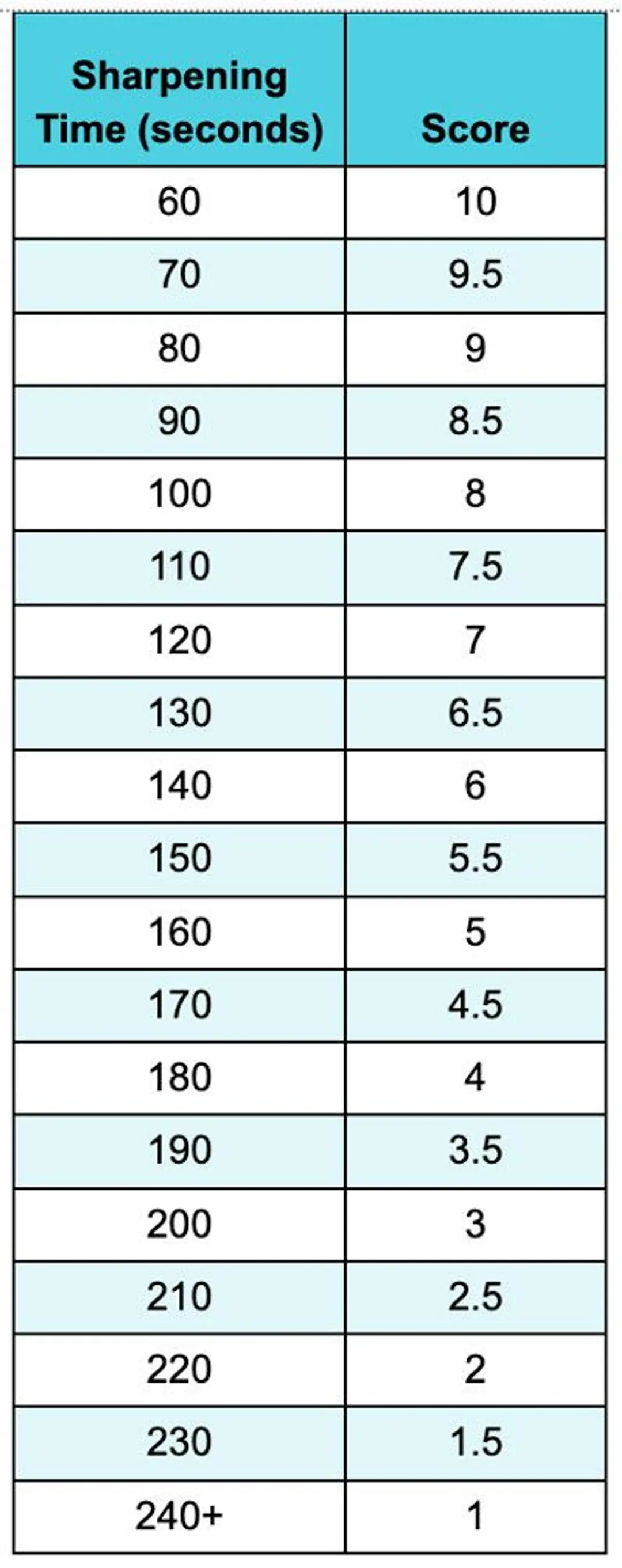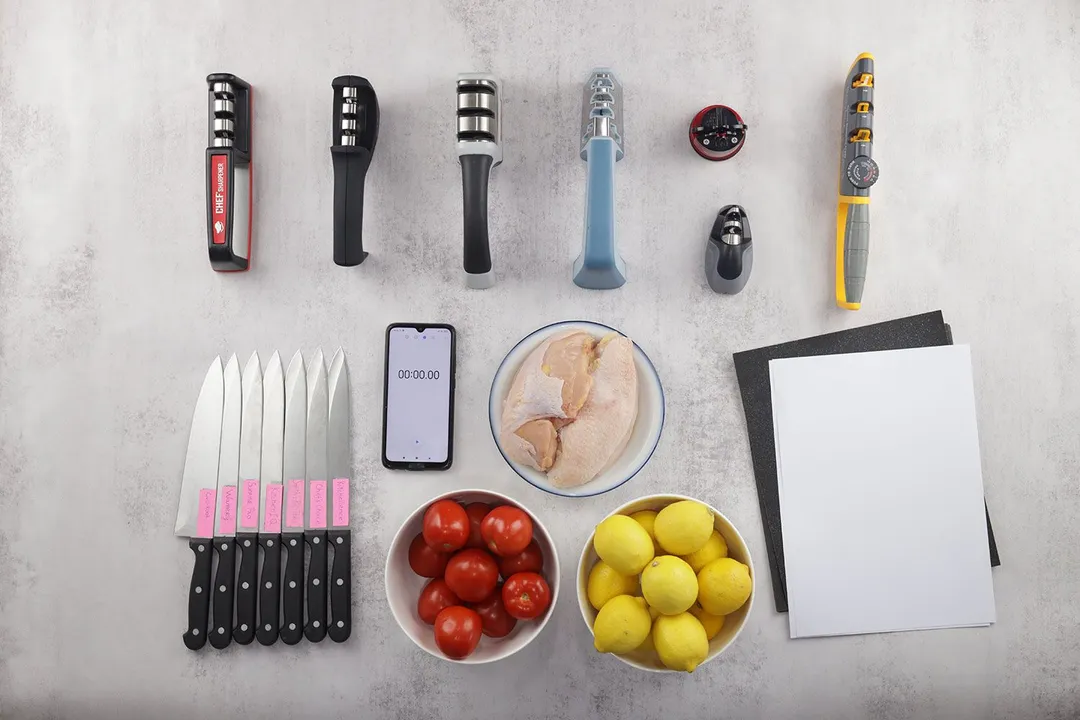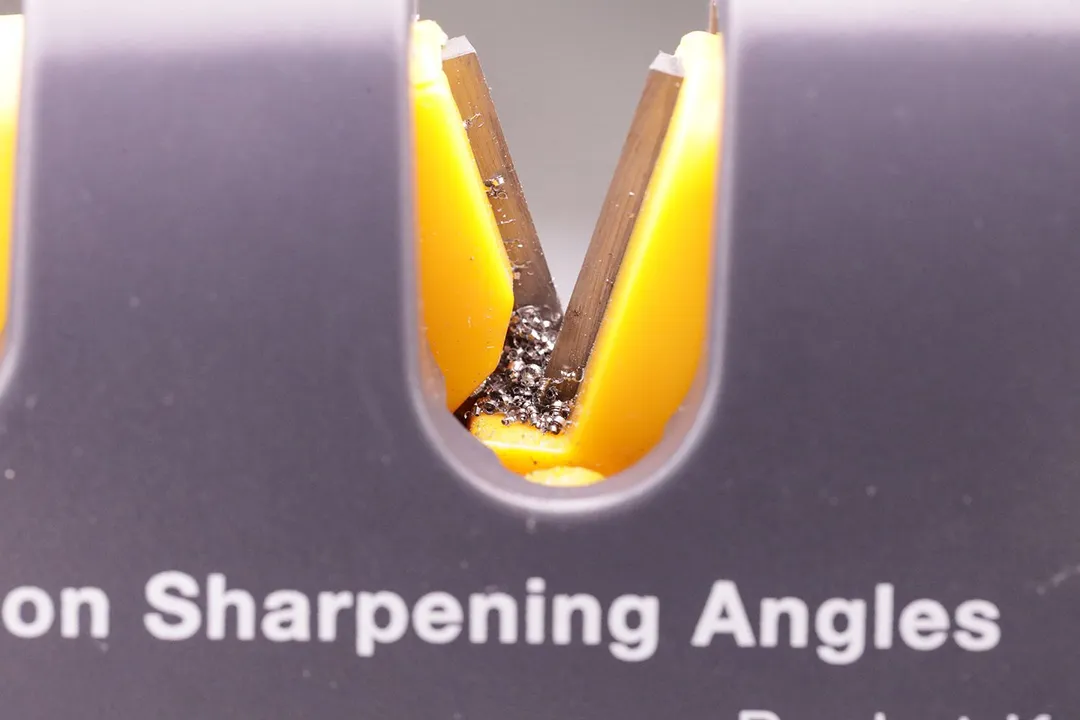Our Manual Knife Sharpener performance TestSharpening Time
This test is aimed at finding out how much time it takes for a sharpener to bring a knife from completely dull to a workable level of sharpness.
Why It Matters
Apart from price and ease of use, convenience is an important criterion — arguably the most important one — when buying a handheld sharpener. Many people prefer these devices because they work quickly and are simple to use. Home chefs can fix up their blades quickly and get back to food preparation ASAP.
Obviously, the faster a device can sharpen, the more desirable it is. That’s why we decided to test how long each sharpener took to bring a knife to workable sharpness.
Since this is such an important factor, we assigned it 35% of the Performance score, which in turn makes up 50% of the total score for handheld devices.
How Sharp Is ‘Workable Sharpness’?
We picked the upper end of our Practical Sharpness Scale, level 6, as the benchmark level of proficiency.
Level 6 — the ability to slice through a whole lemon — is a good benchmark for utility in the kitchen. Lemons have tough, slippery skin and hard seeds amid soft flesh. It’s challenging to cut through a lemon in one swift motion without applying a lot of pressure. If your knife can do that, it should be able to handle most other food-preparation tasks with ease.
“Why not a higher level on the scale?” you may be wondering.
We learned from experience that most handheld devices take significantly more time to reach higher levels on the Practical Sharpness Scale. Because Level 6 is sufficient for almost all tasks, choosing a higher benchmark would not be very meaningful. In the end, it’d defeat the purpose of a handheld sharpener in the first place, which is to save you some time to focus on cooking.
Equipment
Here’s a list of what we used to conduct the test.
- Sharpening device
- 8-inch, 20-degree-bevel chef’s knife
- Sandpaper
- A4 paper
- Fresh lemons
- Clock app
The Testing Process
Step 1. We blunt a knife by running it across sandpaper for 60 seconds and then test it on a piece of A4 paper to make sure it is as blunt as we expect. We try to achieve the same level of bluntness across all the test knives.
Step 2. Next, we run the knife through the sharpener until the edge looks reasonably sharp, but not enough to cut the lemon.
Step 3. We try the knife out on a lemon. We decide how many more draws we need based on the number of draws it takes to cut through the lemon.
Step 4. The sharpening process is repeated until the knife can slide through the lemon with ease. We give up and assign one point to a device if it takes more than 4 minutes to sharpen to this level.
The sharpening time is noted through the entire process.
Scoring
With regular maintenance, your knife should need between 30 - 60 seconds on a manual sharpener to reach a desirable sharpness. Because we deliberately blunt our test knives on sandpaper, we picked 60 seconds as the benchmark.
If a sharpener takes 60 seconds to bring a knife to lemon-cutting capability, it gets the maximum score of 10. Every extra 10 seconds beyond that translates to a decrease of 0.5 point.
Any sharpener that takes 240 seconds (4 minutes) or longer receives a score of 1 point.






